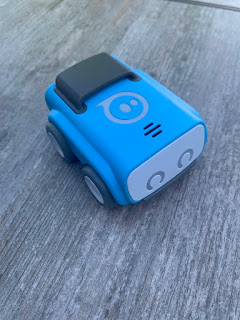Gamification: Why play when you can make a game?
Topic: Gamestar Mechanic: learning how to design a story-based game.
Suggested Grade: 6-8
Materials:
- Gamestar Mechanic Account. Free or paid. It is cheap to have a paid account ($2 per student exclusive education price, and I strongly urge you do. You can survive without it though.) You can set up an institution and track student progress!
- Pixabay.com or other sites that offer royalty free images.
- Intro to gaming video: https://youtu.be/x24KoVNliMk
Tech Tips:
What better way to teach students about game design than playing a game while they learn? Gamestar Mechanic also allows students to design as well as share their games. This is my third year using Gamestar mechanic as an introduction to game design. Students will learn about the principles of game design: space, components, mechanics, goals and rules, as they learn how to independently design on their own.
Gamestar Mechanic takes the stress out of students learning to code and places value on design only. Keep this in mind. I love how students can submit and publish their games in game alley as well as the ability to peer review games.
Make sure to check out their getting started teacher page and PDF: https://gamestarmechanic.com/teachers/using_gamestar
They also have a few lesson ideas as well that are worth the look.
A few notes: In order for this implementation of this lesson to be successful, you students must complete the following:
- They must publish their games. This is done by working on Addison’s Quest- at least level 3. However, the more they play the more they earn!
- In the workshop, I suggest they complete custom background challenge (premium feature.) This makes their game more unique.
ISTE Standards for Students 2016: 1a., 1b., 1c., 2a., 2b., 2c., 2d., 4b., 4c., 4d., 6a., 6d., 7a.
Lesson:
Note this is only a sampling of what you can do. Please make it your own. You may not have the availability to all the resources below.
Day 1:
1. To introduce students to video games, we watch together as a class the video below from Ted Ed...
…. And what better way to learn about the history of video games than playing this short game on Kahoot! https://play.kahoot.it/#/k/517e3f64-47d3-474a-b43e-a6ee2886f9a0 as a class. Take grades if needed!
2. Give students a general overview of Gamestar Mechanic and allow them to set up their accounts according to your directives. https://gamestarmechanic.com
3. Allow time to play and have students get acquainted with Gamestar Mechanic.
Day 2: (or flip it and assign this for home)
{Optional lesson- and only works if you have a BrainPop! account. Set up users in BrainPop! and assign students to watch the movie on Video Games and assign students the activity, and graphic organizer.}
Continue to allow students to play Addison’s Guest. Some, if not most should be a good portion of the way through by day 3 or 4. They should describe their games and have discussions with you utilizing the new vocabulary that they were introduced to. Use Quizlet to reinforce this. Play Quizlet Live to help reinforce skills.
Day 4 or 5:
Encourage students to complete custom background challenge (premium feature.) This makes their game more unique. If students finish early, have them go to the Workshop to edit drafted games: https://gamestarmechanic.com/workshop
Day 6:
Introduce the cumulative game: Creating a game with a story line.
Students have learned about the story line genre that takes places in many video games. What is the story to Mario? What is his goal? How about Skylanders? Etc.
For this cumulative lesson, students will create a three level game based on a story.
- In level 1, the easiest level, the game’s story comes to life, Characters are introduced and the plot is set.
- In level 2, the conflict of the story unfolds. This level is a little bit harder that before.
- In level 3, the resolution. The hardest level. This is where the characters are to defeat whatever they need to end the game.
Have students share their ideas with one another in the storyboard provided below in Google Docs.
Time needed to complete: 5-6 classes.
Resources:
Students MUST Publish the game, follow each other on Gamestar Mechanic, and leave feedback.
Optional: Create a rubric using Google Forms for students to leave feedback (rubric) while they are playing the game. https://docs.google.com/forms/d/e/1FAIpQLSfSTNw8PDYq77zGM66q1Y4b6SwnBkZelMB6xIiQ5D_zeBPBkA/viewform
Example: https://docs.google.com/document/d/1fLfNpRY1qmKbLsRDLhPzbu99Epme_AFgjYyHg8T9deo/edit#
To make a copy of your own click here: https://docs.google.com/document/d/1fLfNpRY1qmKbLsRDLhPzbu99Epme_AFgjYyHg8T9deo/copy
Getting Started with Gamestar Mechanic!
To make a copy of your own click here: https://docs.google.com/document/d/1fLfNpRY1qmKbLsRDLhPzbu99Epme_AFgjYyHg8T9deo/copy
Getting Started with Gamestar Mechanic!
A look inside Gamestar Mechanic. My life as a professional gamer.... I will stick with teaching:



Comments
Post a Comment